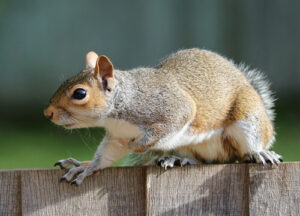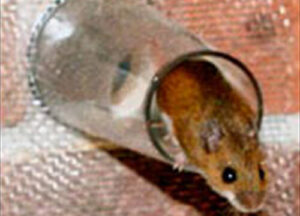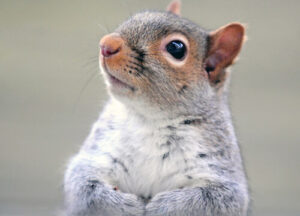WESTCHESTER COUNTY #
WESTCHESTER COUNTY #
Find out more about our humane exclusion products for residential and commercial use at batcone.com.

Best practices are to remove artificial food sources (bird seed, pet food), Protect vulnerable crops, Prevent entry into building, and if young are present, remove the entire family before blocking the entrance to their den.
It is important to promptly remove squirrels to assure that your home and property are not destroyed by chewing and that your family isn’t exposed to diseases. Proper sanitation and property maintenance will prevent most squirrel control problems.
Move your bird feeder twenty or more feet from the house. Close or cover garbage cans, and if possible make them inaccessible. If you have a barbecue near the house, keep it clean and covered. Squirrels have been know to eat the drippings and sometimes build a nest if they can get inside.
The sure way to take care of your problem is with trapping and removal of the animals. Call Westchester Wildlife for Squirrel Removal in Westchester, Dutchess, and Fairfield Counties.
The most common New York squirrels are the grey squirrel, red squirrel, fox squirrel, Northern flying squirrel, and Southern flying squirrel. The fox squirrel has the most limited distribution of the group (in New York, it’s found only in pockets in the most western part of the state). The grey squirrel is the most common and adaptable, but they’re all comfortable in cities and suburbs.
 Squirrels are members of the rodent family. The most frequently dealt with nuisance squirrel is the Eastern Grey Squirrel. They feed on a great variety of foods, such as nuts, seeds, fungi, fruits, and of course the seed in your bird feeder. They store nuts and acorns in holes in the ground. Grey squirrels breed throughout the year, but there are two distinct peaks, in the winter and summer.
Squirrels are members of the rodent family. The most frequently dealt with nuisance squirrel is the Eastern Grey Squirrel. They feed on a great variety of foods, such as nuts, seeds, fungi, fruits, and of course the seed in your bird feeder. They store nuts and acorns in holes in the ground. Grey squirrels breed throughout the year, but there are two distinct peaks, in the winter and summer.
North American Red Squirrels are also referred to as pine squirrels, American red squirrels and chickarees. Red squirrels can be easily identified from other North American tree squirrels by their smaller size, territorial behavior and reddish fur with a white belly. They are also much bigger than chipmunks. The diet of these tree squirrels is specialized on the seeds of conifer cones.
The Northern Flying Squirrel is a small, nocturnal mammal weighing 3 to 5 ounces and measuring 6 to 8 inches in total length. It has a long, broad, flattened tail, very eyes, and thick, silky fur. It is a colonizing mammal. It does not actually fly, but uses flaps of skin on either side of its body to glide through the air.

Squirrels are a common nuisance situation any time of year. Customers calling from fall through winter (September through February) often complain about denning activity. Typically, an attic den could be home to 8?10 squirrels (red or gray squirrels) or dozens of flying squirrels (perhaps up to 50).
From March through May, most calls relate to their breeding, as females seek places to raise their young. That’s when you typically find one female and her young in the attic or wall.
Squirrels like to nest inside the eaves and attics of homes and commercial properties and when left alone they can be quite destructive. Squirrels are difficult to eradicate once established. They will return year after year to the same location for nesting.
In residential areas, squirrels will travel along powerlines and short out transformers. They gnaw on wires, enter buildings, and build nests in attics. Squirrels can cause a fire hazard in homes by bringing in nesting material, and by chewing on power lines.
Squirrels can leave behind a lot of droppings and urine in the attic. The droppings not only smell bad, but they pose a bio-hazardous risk, and the smell attracts new squirrels.
Squirrels occasionally damage lawns by burying or searching for and digging up nuts. They will chew bark and clip twigs on ornamental trees or shrubbery planted in yards. Often squirrels take food at feeders intended for birds.
Flying squirrels are a nuisance because they are colonizing animals. In the wild, they prefer hollowed out trees as nesting sites, but many decide that your attic is the perfect environment. Because they are nocturnal, you may hear them scurrying about at night, particularly as they move in and out of the building. Many people hear the noise and mistake flying squirrels for rats, mice, or other types of squirrels. Flying squirrels chew, like all rodents, and can leave stains on your house at exit/entry sites.
Westchester Wildlife provides the best squirrel removal service in NY and CT. For an estimate, contact us today at 800-273-6673 and one of our representatives will get you scheduled for an estimate to remove your squirrel issue!
If you have any problem regarding wildlife, please contact us or call at (800) 273-6673.
Call (914) 760-5713 for situations requiring an immediate response. A team of professionals who are there when you need them.
Toll Free: 800.273.6673
Phone: (914) 760-5713
PO Box 579 Brewster,
NY 10509 USA
* Westchester Wildlife, LLC is not affiliated with the County. All services are fee based.
Copyright © 2025 Westchester Wildlife LLC. All Rights Reserved.